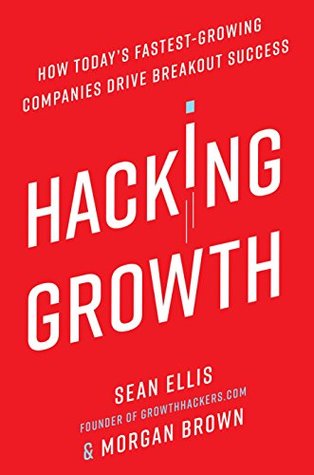More on this book
Community
Kindle Notes & Highlights
by
Sean Ellis
Read between
November 10 - November 15, 2020
“How would you feel if you could no longer use Dropbox?” Users could respond “Very disappointed,” “Somewhat disappointed,” “Not disappointed,” or “N/A no longer using the product” (I wrote the question this way because I found that asking people if they were satisfied with a product didn’t deliver meaningful insights; disappointment was a much better gauge of product loyalty than satisfaction).
One of the cardinal rules of growth hacking is that you must not move into the high-tempo growth experimentation push until you know your product is must-have, why it’s must-have, and to whom it is a must-have: in other words, what is its core value, to which customers, and why.
Kerti Alev liked this
How disappointed would you be if this product no longer existed tomorrow? a) Very disappointed b) Somewhat disappointed c) Not disappointed (it really isn’t that useful) d) N/A—I no longer use it
What would you likely use as an alternative to [name of product] if it were no longer available? I probably wouldn’t use an alternative I would use: What is the primary benefit that you have received from [name of product]? Have you recommended [name of product] to anyone? No Yes (Please explain how you described it) What type of person do you think would benefit most from [name of product]? How can we improve [name of product] to better meet your needs? Would it be okay if we followed up by email to request a clarification to one or more of your responses?
Clearly, the larger the user base when you conduct the survey, the more reliable and informative the information will be. You’re looking to get at least a few hundred responses to the first question to be a reliable guide for this kind of survey.
One of the most important changes they made was updating the new user experience (NUX) to focus heavily on helping users find friends;
James Currier, a successful entrepreneur and growth expert turned venture capitalist, suggests that one-third of a company’s engineering time goes to getting the new user experience down just right.
North Star metric.
The North Star should be the metric that most accurately captures the core value you create for your customers. To determine what that is you must ask yourself: Which of the variables in your growth equation best represents the delivery of that must-have experience you identified for your product?
WHAT ARE MY BEST CUSTOMERS’ BEHAVIORS? • What features do they use? • What screens in the app do they visit? • How often do they open the app? • What items do they buy? • What is their average order size? • What time of day do they shop and on which days? WHAT ARE THE CHARACTERISTICS OF MY BEST CUSTOMERS? • What sources were they acquired from? Was it an ad, a promotional email to the chain’s customer base, or some other place? • What devices do they use? • What is their demographic background, including age, income, and more? • Where do they live? • How close are they to the store or other
...more
ICE score system, with ICE standing for Impact, Confidence, and Ease, as a way to organize all the ideas generated in the
The methods for retaining users evolve according to the phase of retention the user is in. Brian Balfour, whom we’ve met earlier, highlights that retention breaks down into three phases: initial, medium, and long-term.
At what price point does [your product] become too expensive that you’d never consider purchasing it? • At what price point does [your product] start to become expensive, but you’d still consider purchasing it? • At what price point does [your product] start to become a really good deal? • At what price point does [your product] start to become too cheap that you’d question the quality of it?9


